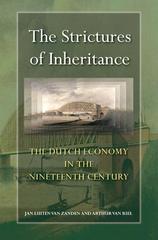7. Use (1) to derive the capital-share in the economy, i.e. 44. Here R is the rental rate of capital, which firms have to pay to use a unit of capital in production. In the data, this capital share is equal to 1/3. What does this imply for o? 8. Solve for the marginal product of capital (MPK = ) ) as a function of the capital-labor ratio k (t), which is not necessarily equal to the steady-state level k*. How does it depend on A? Now calculate the marginal product, when k (t) is equal to the steady-state value k*, which you computed above. How does it depend on A? Can you give an intuition for this surprising result? Now suppose that s = 0.1, 6 = 0.1, n = 0.02 and o = 1/3. What is the marginal product of capital in the steady-state? 9. Now we want to check whether this model can explain a ten-fold difference in per capita GDP between two countries, only based on differences in the propensity to save s. Consider two countries, 1 and 2, that have the same technology (1) and are in their steady state. Let the saving rate in country 1 be given by $1 = 0.1. Let per capita-income in country 1 be 10 times as high as in country 2 and normalize A = 1 in both countries. (a) Assuming the same parameters as in Question 8, solve for $2. (b) Let MPK, and MPK2 be the marginal product of capital in country 1 and 2. Solve for marginal products MPK, and MPK2 in the respective steady-states of the two countries. If you had some money to invest, where would you invest it? Would such investments tend to increase or reduce income differences across countries?2. Suppose that the quantity theory of money holds. So, the equation of exchange holds for this economy and money demand (MD) is proportional to nominal income Further, assume that we are in a classical economy in which real output (Y) is fixed by supply- side factors at 10,000 units and the money supply (M,) is fixed at 8000 units. a) Suppose that individuals initially wish to hold a quantity of money balances equal to one-fifth of their nominal income i.e., k = 1/5. Use the money market equilibrium condition to determine the initial equilibrium price level for this economy. b) Now suppose that individuals in this economy increase their money demand and wish to hold money balances equal to one-fourth of their nominal income, i.e., k is now 1/4. With output fixed by supply-side factors at 10,000 units and money supply unchanged at 8000 units how does this increase in money demand affect the equilibrium price level? How would you explain this change in the equilibrium price level? c) Graphically illustrate your answers to parts (a) and (b) in an aggregate demand-aggregate supply graph. For the aggregate demand curve(s), explicitly indicate some of the (P,Y) combinations used to graph the curve(s) on your graph. Also indicate the initial and new equilibria.Ex 17.3: Fish and Coconuts, Part II Let's decentralize the model from exercise 5.2. Now, let's think of "Chuck" as two firms and one consumer. Each firm (i.e., the "fish firm" that produces good 1 and the "coconut firm" that produces good 2) has the production function f(L) = VI Both firms take the price of their good as given. The labor supply is L = 100, supplied inelastically. For simplicity, let's fix p2 = 1, and let p1 = p; so throughout this problem, we'll be interested in the equilibrium price ratio p = p1/P2. (a) Assuming the two firms take the price of their good as given, find their equilibrium profit-maximizing combinations of outputs, Y, and Y2, as a function of p. You may do this in one of two ways: . Easy way: Use the fact that the firms will produce at the point along the PPF that sets MRT = p. Remember that you found the equation of the PPF and an expression for the MRT in exercise 5.2! . Hard/thorough way: Find the firms' individual supply functions, S1(p, w) and S2(w) (since p2 = 1). Find their labor demands, and set labor demand equal to the total labor supply. Solve for the equilibrium wage rate as a function of p - that is, w*(p). Finally, plug w* (p) back into the supply functions to get Yr (p) = Si(p, w*(p)) and Y,(p) = S2(w* (p)). (b) Find the total monetary value of the fish and coconuts produced given p1 = p and py = 1: that is, evaluate M(p) = pYi(p) + Y2(p) given the functions you derived in part (a). (c) Now suppose the consumer has preferences u($1, 22) = 45 Inc1 + 1012. Find her optimal quantity of fish, X], as a function of p. (Note: because this is a quasilinear utility function, it won't be dependent on her income!) Set this equal to the equilibrium quantity of fish you found in part (a), Y; and solve for the equilibrium price ratio, p*. Note: this is a nasty quadratic equation, use a calculator or Wolfram alpha to solve! Confirm that at that price ratio, the quantity of fish and coconuts supplied (and therefore demanded) is the same as you found in question 5.2(b)









